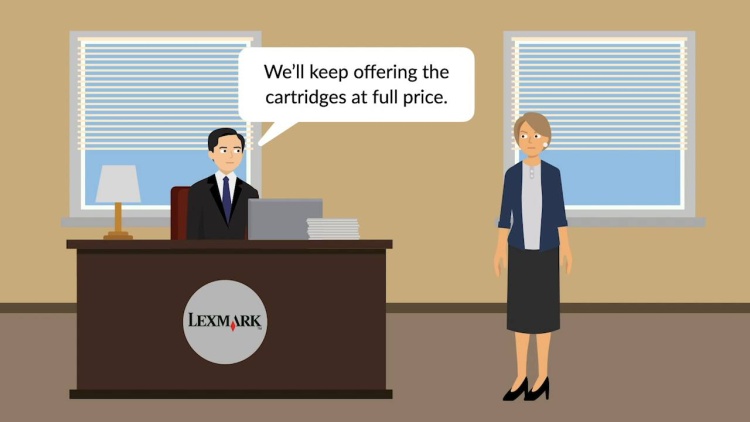Impression Products, Inc. v. Lexmark International, Inc.
United States Supreme Court
581 U.S. 360, 137 S. Ct. 1523, 198 L.Ed.2d 1 (2017)

- Written by Sean Carroll, JD
Facts
Lexmark International, Inc. (Lexmark) (plaintiff) manufactured and sold printers and toner cartridges. Lexmark sold two types of toner cartridges for use in Lexmark’s printers: regular and Return-Program. Purchasers could refill and reuse regular cartridges. Customers could purchase Return-Program cartridges at a 20 percent discount but had to return the cartridges to Lexmark after a single use. Impression Products, Inc. (Impression) (defendant) acquired and refilled used Return-Program cartridges. Impression then resold the used Return-Program cartridges to users of Lexmark printers. Lexmark sued Impression for patent infringement, arguing that Lexmark sold the Return-Program cartridges with a clear restriction on their reuse. Impression argued that because of the patent-exhaustion doctrine, Lexmark’s single-use restriction on its Return-Program cartridges was invalid. In support of that position, Impression argued that Mallinckrodt v. Medipart, 976 F.2d 700 (1992), which held that a patentee’s single-use restrictions on the postsale use of a product were valid, was no longer good law. The district court agreed and dismissed Lexmark’s infringement claim. The United States Court of Appeals for the Federal Circuit reversed, relying on Mallinckrodt. The United States Supreme Court granted certiorari.
Rule of Law
Issue
Holding and Reasoning (Roberts, C.J.)
What to do next…
Here's why 899,000 law students have relied on our case briefs:
- Written by law professors and practitioners, not other law students. 47,000 briefs, keyed to 994 casebooks. Top-notch customer support.
- The right amount of information, includes the facts, issues, rule of law, holding and reasoning, and any concurrences and dissents.
- Access in your classes, works on your mobile and tablet. Massive library of related video lessons and high quality multiple-choice questions.
- Easy to use, uniform format for every case brief. Written in plain English, not in legalese. Our briefs summarize and simplify; they don’t just repeat the court’s language.





